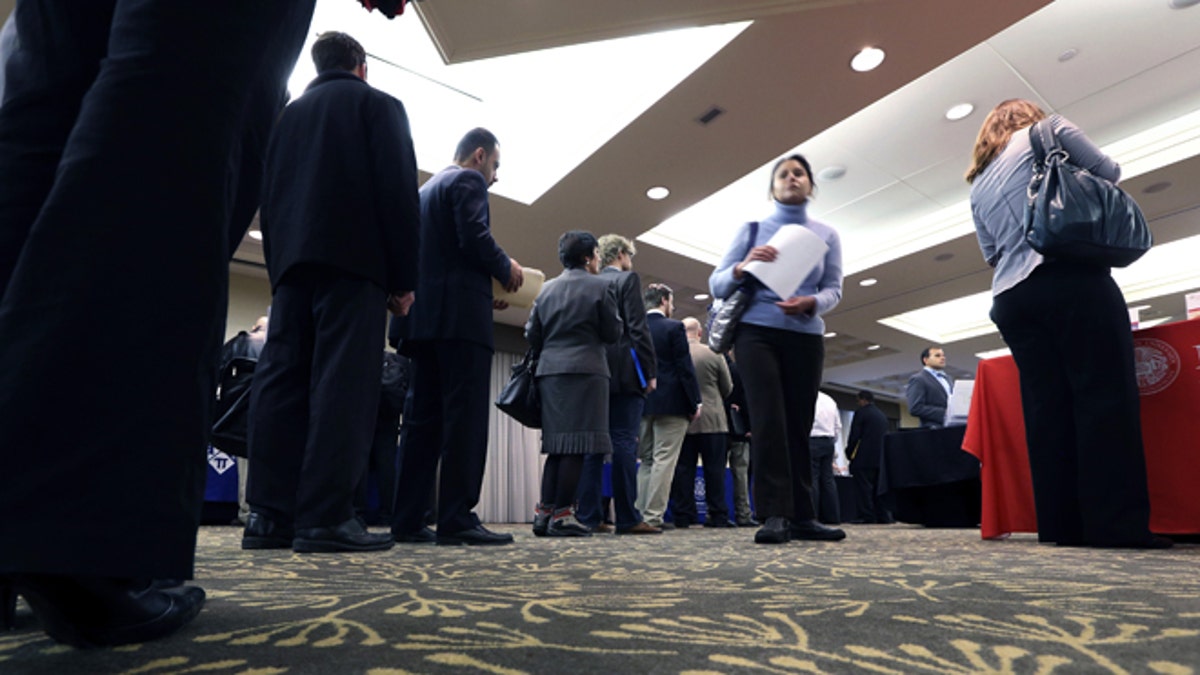
Feb. 25, 2013: Job seekers line up to speak with a State Department employee about job opportunities in the federal government during a job fair in Boston. (AP)
U.S. employers added just 88,000 jobs in March, as hiring slowed and tens of thousands of people stopped looking for work -- in a reminder of the job market's shaky health.
After a burst of strong hiring, the number of positions added in March marks the slowest pace in nine months. The Labor Department said the jobless rate actually dipped last month from 7.7 percent to 7.6 percent. While that is the lowest in four years, the rate fell only because more people stopped looking for work. The government only counts people as unemployed if they are actively looking for a job.
According to the Labor Department, the civilian labor force dropped by nearly 500,000 in March. That sent the percentage of Americans working or looking for jobs down to 63.3 percent, the lowest in nearly 34 years.
Stock futures fell after the jobs report was released.
The weakness in March may signal that some companies were worried last month about steep government spending cuts that began on March 1.
March's job gains were half the pace of the previous six months, when the economy added an average of 196,000 jobs a month. The drop raises fears that the economy could slow after a showing signs of strengthening over the winter.
In fact, the government said hiring was even stronger over the previous two months than estimated last month. February's job gains were revised to 268,000, up from 236,000. January job growth was 148,000, up from 119,000.
Several industries cut back sharply on hiring in March. Retailers cut 24,000 jobs after averaging 32,000 in the previous three months. Manufacturers cut 3,000 jobs after adding 19,000 the previous month. Financial services shed 2,000.
Economists say the decline in the work force reflects several trends: many of those out of work become discouraged and give up on their job hunts. And as the population ages, more people are retiring.
Most economists are predicting the economy strengthened from January through March, helped by the pickup in hiring, a sustained recovery in housing and a more resilient consumer. Consumers stepped up purchases in February and January, even after Social Security taxes increased this year.
Still the higher taxes have reduced paychecks. And many economists say $85 billion in automatic government spending cuts will slow growth in the spring and summer.
Mark Vitner, an economist at Wells Fargo Securities, expects that the economy expanded at a 3.2 percent annual rate in the first quarter. But he forecasts growth will slow to a 2 percent pace in the second quarter, and then rebound after the impact of the government spending cuts fades.
Economists expect the spending reductions will shave half a percentage point off economic growth this year. Many federal workers will experience pay cuts. And government contractors will likely cut jobs. That could also drag down overall monthly hiring.
The Associated Press contributed to this report.




